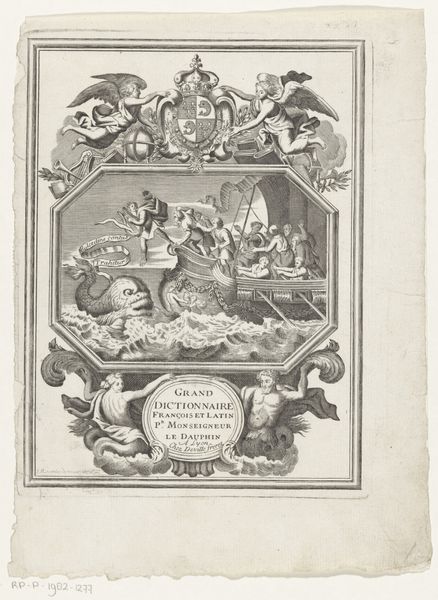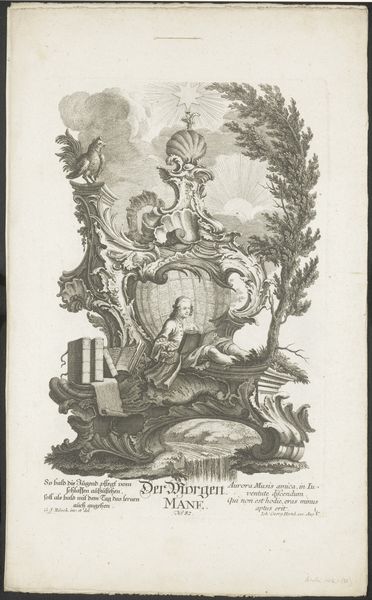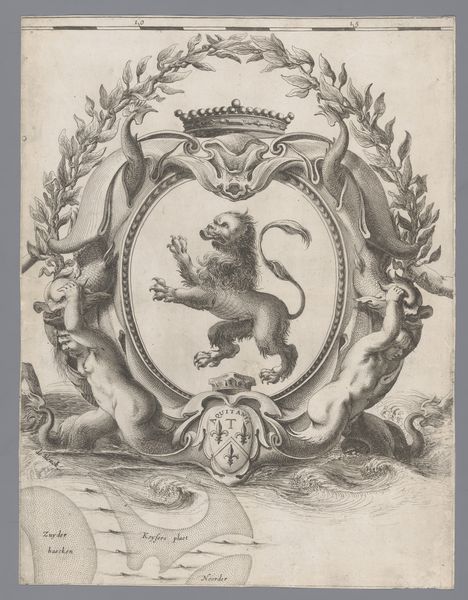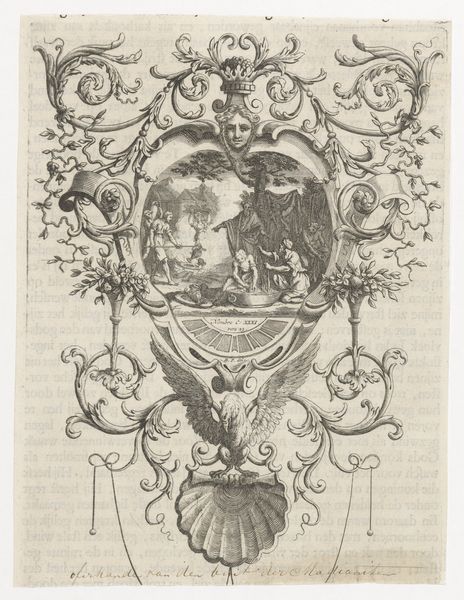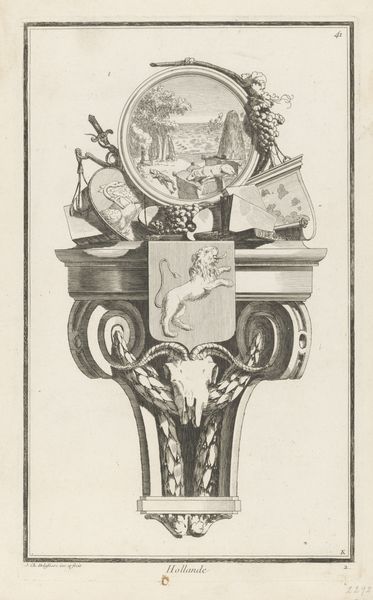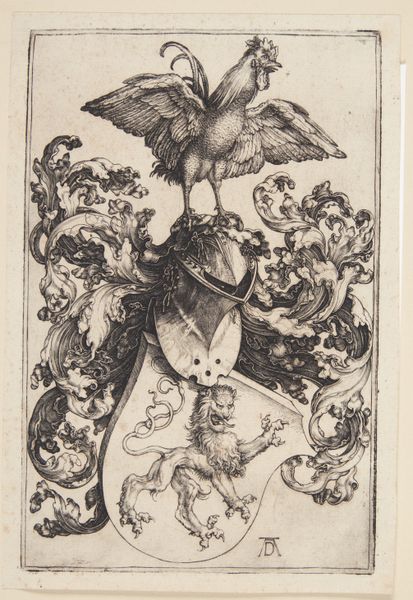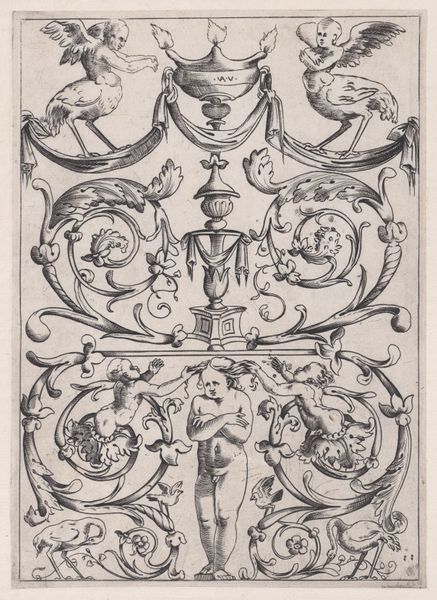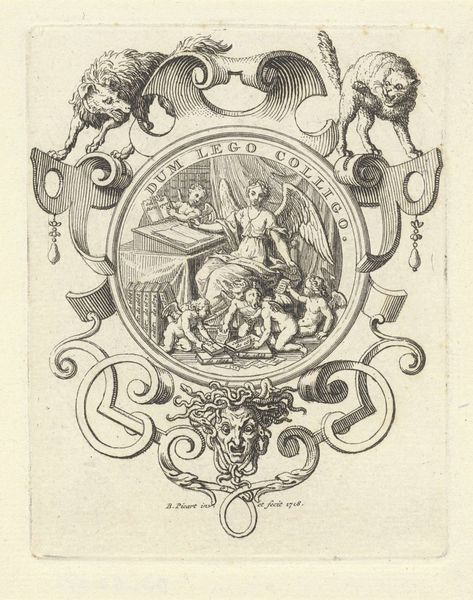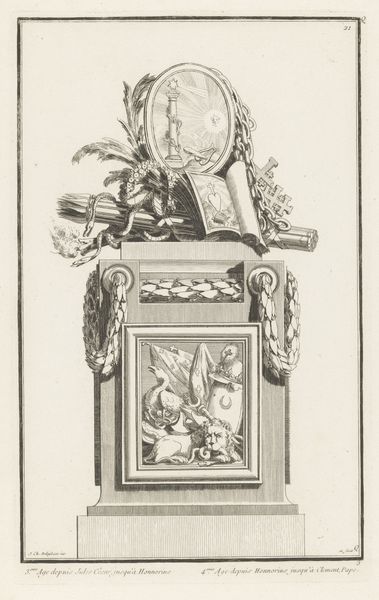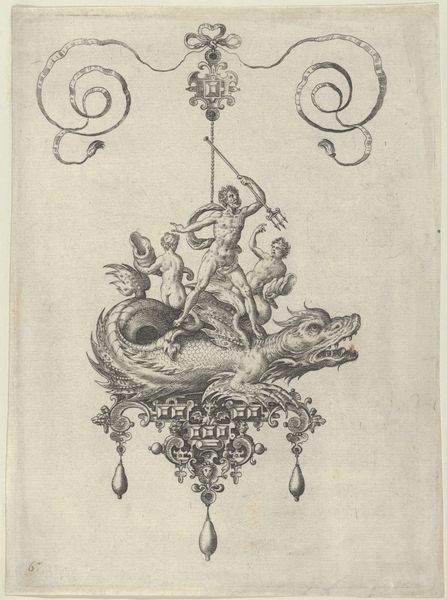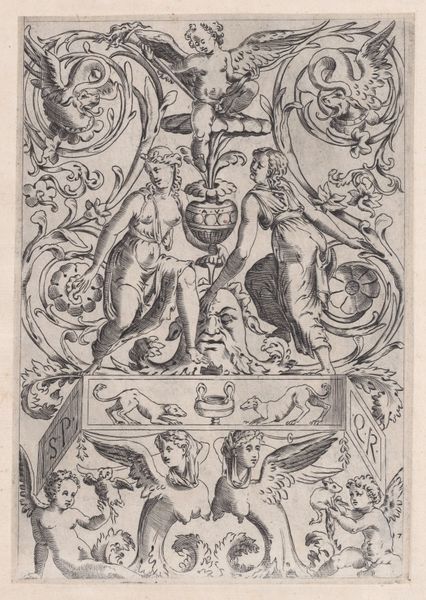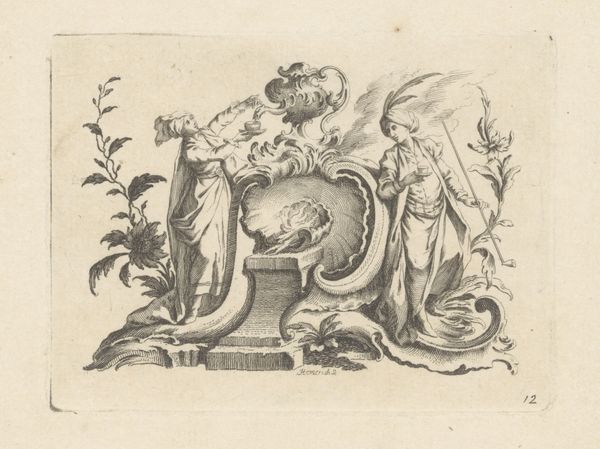
Ornament met een adelaar en objecten die de kunsten verbeelden c. 1725 - 1750
0:00
0:00
print, engraving
#
allegory
#
baroque
# print
#
decorative-art
#
engraving
Dimensions: height 324 mm, width 242 mm
Copyright: Rijks Museum: Open Domain
Curator: What a fascinating tableau. Gabriel Huquier created this engraving, titled "Ornament with an eagle and objects depicting the arts," sometime between 1725 and 1750. It's part of the Rijksmuseum's collection. Editor: It strikes me as a rather formal, almost propagandistic arrangement. The tight composition and high contrast exude authority, and perhaps something even darker lurks within. Curator: You are correct; let's not mistake decoration for light-heartedness. Look closely. It seems constructed of traditional allegorical symbols celebrating the arts and creative expression: there is an eagle—long associated with power—art tools and even a laurel wreath Editor: Power, indeed. And this feels inextricably linked with the dominant ideologies of the Baroque. Note the eagle, perched imperiously over symbols of intellectual pursuits. What message does it convey when artistic expression itself appears captive within established power structures? Curator: Intriguing point! These symbols were obviously chosen deliberately, yet perhaps not as simply as they first appear. Is that eagle safeguarding those tools or stifling their use by literally keeping them down? It invites a reinterpretation that acknowledges power's ability to protect but also to constrict and suppress. Editor: Precisely! The allegorical mode served not just as celebration, but often as subtle negotiation and even coded resistance under autocratic regimes. The role of artists, and especially those responsible for distribution through prints, could be delicate. Huquier and others developed a sophisticated visual rhetoric able to reach a very broad audience with nuance, irony and hidden protest. Curator: It serves as a reminder of art's potential both to glorify and challenge the status quo. Thanks to the prevalence of allegory and symbolism, that power to encode existed at its most overt and masked, thus both present and unreadable all at once. Editor: Yes, Baroque art, as ornamental and celebratory as it could be, also harbored possibilities for counter-narratives, hidden subtexts, and critical interpretations relevant to our times.
Comments
No comments
Be the first to comment and join the conversation on the ultimate creative platform.
